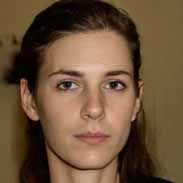Auditing Flashcards, test questions and answers
Discover flashcards, test exam answers, and assignments to help you learn more about Auditing and other subjects. Don’t miss the chance to use them for more effective college education. Use our database of questions and answers on Auditing and get quick solutions for your test.
What is Auditing?
Auditing is an essential part of the accounting and financial world. It is a process of examining a company’s financial records and other documents to assess their accuracy and compliance with applicable laws, regulations, and standards. Audits are performed by qualified audit professionals who have the necessary skills and knowledge to detect potential fraud or misstatements in company records. Auditors help ensure that businesses comply with all applicable legislative requirements, adhere to ethical standards, meet their business objectives, and accurately report their financial results.The purpose of an audit is to provide assurance that a company’s financial statements are free from material misstatement due to errors or fraud. The auditor will use evidence such as inspection, observation, analytical procedures, inquiries or documentation in order to evaluate the accuracy of the financial statements. The auditor will also evaluate internal controls within the organization in order to ensure that there are no weaknesses which could be used for fraudulent activity. After completing an audit report on its findings, the auditor then issues an opinion on whether the financial statements present a true and fair view of the business activities during that period. Audits are conducted regularly throughout businesses’ fiscal year as required by law or industry regulations in order for them to remain compliant with those requirements. Such organizations include publicly traded companies listed on stock exchanges which must produce audited annual accounts every year; non-profit organizations which must submit audited accounts annually; government departments whose spending must be reported; banks whose lending practices must be checked; local government entities who receive public funds; universities who receive large amounts of funding from donors etc. Audits provide shareholders with confidence that their investments are being accounted for accurately by management teams while providing regulators assurance that organizational laws and regulations are being followed properly. Auditing helps remove any doubts about how resources were used within an organization or project so stakeholders know exactly where money has been spent and what returns have been generated from it over time.







